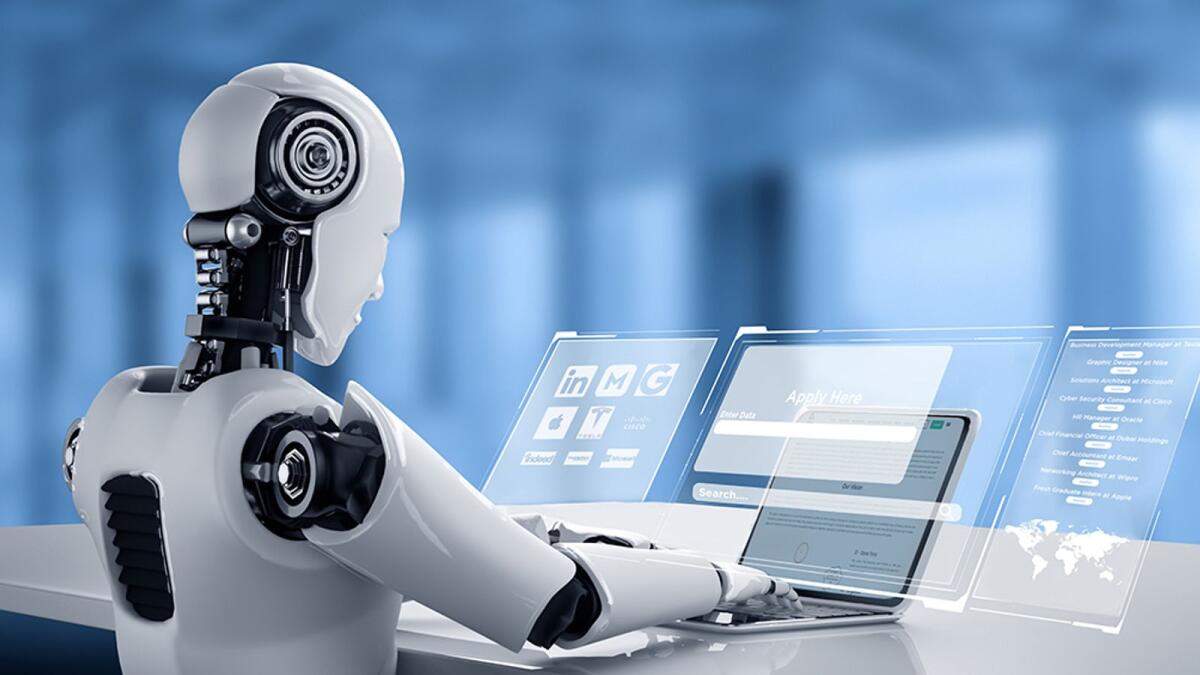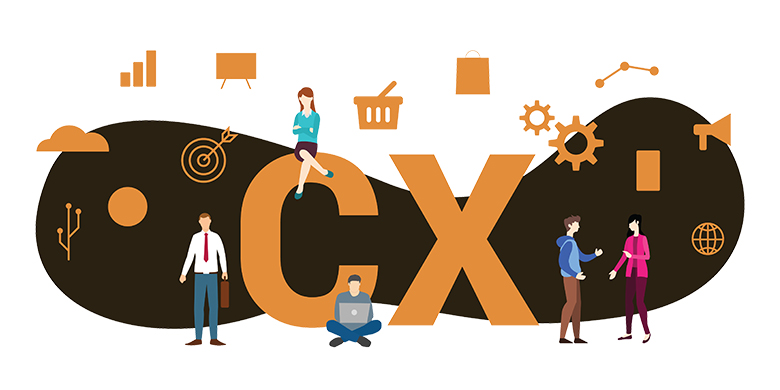Artificial Intelligence has altered the setting in almost every industry, including banking and finance. With AI in banking apps and services, banking has become more customer-centric and technologically appropriate. AI-based systems have helped banks lower costs by boosting productivity and making data-based decisions. Also, intelligent algorithms can spot fraudulent data in no time.
A report by Business Insider indicates that nearly 80% of banks know about the potential benefits AI presents, and by 2023, banks will save $447 billion by using AI apps. These figures suggest that the banking and finance industry will improve efficiency, service, and productivity and reduce costs using AI. Artificial Intelligence in banks and FinTech companies are offering improved and better banking solutions to their consumers through digitization.
New technology, particularly artificial Intelligence (AI), could benefit the industry in various areas, from accounting and sales to contracts and cybersecurity. AI has changed the direction of growth in these industries. Artificial Intelligence in banks with financial technology (FinTech) companies provides better banking solutions to consumers through digitization efforts.
Table of Contents
Artificial Intelligence in the Banking and FinTech Sector

The banking industry has grown due to the use of state-of-the-art technologies. Their industrial landscape includes retail, Information Technologies, and telecommunications, providing mobile banking, e-banking, and real-time money transfer services. Banks profit from digitalization along with Fintech companies using cognitive technology with AI. Almost 32% of financial service providers already use AI services like Voice Recognition and Predictive Analytics.
AI in banking offers process-driven services, customized solutions to customer queries, enhanced employee productivity, software robotics, and building better operational efficiencies.
Let us find out the critical features of AI in the banking/finance sector and how this gives an enhanced customer experience and superior services.
Cybersecurity and Fraud Detection

Numerous banking transactions happen as users pay bills, withdraw money, and make payments using online banking services. Cybersecurity and fraud detection has also become necessary. AI helps banks handle online security, find system loopholes, and minimize risks. AI with machine learning can identify fraud and alert customers and banks.
For example, Danske Bank, Denmark’s largest bank, used a fraud detection algorithm in place of its old rules-based fraud detection system. This AI tool increased fraud detection capacity by 50% and decreased false positives by 60%.
AI also helps banks to handle cyber threats. Since 2019, the financial sector has faced 29% of all cyber attacks, making it the most vulnerable sector. AI can watch and check potential cyberattacks before they impact employees and customers or hack internal systems.
Chatbots

Chatbots have become a practical application of AI in banking. Unlike humans, chatbots can work 24*7.
Also, they can keep track of the usage pattern of a particular customer, and it helps them know the needs of a user.
By integrating chatbots into banking apps, banks and other FinTech apps can guarantee their availability round the clock. With this knowledge of consumer behavior, chatbots can offer personalized customer support and advise appropriate financial services.
Erica is one AI chatbot, a virtual customer assistant from the Bank of America. This AI chatbot handles everything from credit card debt reduction to card security updates. Erica catered to 50 million client demands in 2019.
Loan and Credit Decisions
By incorporating AI-based systems, banks have made loan and credit decisions more informed, safer, and profitable. Still, a good number of banks need to be more open to using credit history, credit scores, and consumer references to decide the creditworthiness of an individual or company.
Nevertheless, one must acknowledge that AI-based systems often produce results replete with errors, ignoring real-world transaction history and miscalculating credit scores.
An AI-based system sends alerts to banks about potential defaults. In short, such technologies are pivotal in changing the future of consumer lending.
Tracking Market Trends
Artificial intelligence in FinTech services enables banks to process vast volumes of data and study market trends, currencies, and stocks. Cutting-edge machine learning technologies evaluate market sentiments and offer investment opportunities.
AI for banking tells you the best time to invest in stocks and cautions when there is a potential risk. It makes decision-making more manageable and makes trading appropriate for banks and their clients.
Collection of Data and Analysis
Banking and FinTech companies register millions of transactions every day. Keeping pace is an overwhelming task for employees. Structuring and recording a massive amount of data without any mistakes is impossible.
AI-based innovative solutions efficiently help data collection and analysis, enhancing the overall user experience. Banks and FinTech companies use this information for catching fraud or making credit decisions.
Consumer Experience

With digitization, consumers look for better experiences while using FinTech or banking services. For instance, ATMs came as a rescue to the consumers who could avail of banking services without going to the bank.
It led to more innovation, and now customers can open bank accounts from their smartphones.
Integration of AI in banking and finance services has also enhanced consumer experience. With AI technology, Know Your Customer (KYC) uploading takes much less time. Besides, the FinTech and banking sectors can showcase new products and financial offers without nuisances.
Applying for a personal loan or credit has become hassle-free with AI, and consumers don’t have to go through the whole process manually. Moreover, it reduces the time for approval and loan disbursement.
Risk Management

Global elements such as currency fluctuations, natural disasters, or political unrest impact banking and financial industries, as we witnessed during the Covid-19 pandemic. During such troubled times, AI-driven analytics gives a precise picture of the future and lets us prepare and make the right decisions.
AI can predict future behavior by studying past behavioral patterns and smartphone data; therefore, the proneness to commit mistakes is less.
Regulatory Adherence
Banking is one of the most regulated sectors of the economy globally. Governments have the regulatory authority to guarantee that banking customers don’t use banks to commit financial crimes. They have listed down risk profiles to avoid large-scale defaults.
The compliance regulations change frequently, and banks update their functions and workflows, abiding by these regulations regularly.
AI uses deep learning and NLP(Natural Language Processing) to read new compliance guidelines for financial institutions and help improve their decision-making process. AI banking can’t substitute a compliance analyst totally, but it makes their operations speedier and more effective.
Predictive Analytics
One of AI’s most typical use cases includes semantic and natural language applications and predictive analytics. AI can catch specific patterns and correlate the data that traditional technology could not detect earlier.
The patterns thrown by AI could show untapped sales opportunities, cross-sell prospects, or even operational data metrics leading to revenue impact.
Automation of Operations
Robotic Process Automation (RPA) algorithms lead to operational efficiency and accuracy that reduce automation costs of repetitive tasks. While AI takes care of automation, users can focus on more complicated operations needing human intervention.
Today, banking institutions successfully use AI technology to review documents and derive data much faster than humans.
How to become the AI-first
Using AI banking industry has become customer-centric from people-centric. Now banks have a more comprehensive strategy to meet customers’ demands and expectations.
Customers’ expectations also have increased with the digitization of the industry. Banks must tackle internal challenges like legacy systems, data storage, asset quality, and restricted budgets, and these issues deter banks from growing fast and meeting their customers’ demands. Now banks have started using AI as an enabler of this change.
How an AI-first bank works
How an AI-first bank works and the steps banks take to adopt AI are based on four crucial factors — people, administration, approach, and technology.
Create an AI strategy
The AI implementation process needs an organization-level AI strategy considering the company’s goals and values.
It’s crucial for banks to
- Carry out a market study to find out where to use AI to bridge gaps between people and processes.
- Use an AI strategy that complies with industry standards and regulations.
- Assess the existing international industry standards.
- Refine the interior practices and policies concerned with talent, data, infrastructure, and algorithms.
- Provide exact directions and recommendations for adopting AI for the bank’s operations.
Plan a Test-driven Process
Identifying the highest-value AI opportunities that work with the bank’s processes and strategies is essential.
Banks must also estimate how to enforce AI banking solutions within their present or modified operations.
Once the potential AI and machine learning use cases in banking are determined, the technology teams should test their feasibility and map out the AI talent. Banks need many experts, algorithm programmers, or data scientists to develop and implement AI solutions, or they can hire technology providers instead of in-house experts.
Design and Deploy
This step is to execute the process. Before designing complete AI systems, the banks will have to build prototypes to use and identify the flaws in the technology. Relevant data must be compiled and fed to the algorithm to test prototypes. Data accuracy is necessary since the AI model trains and builds on this data.
The last step is to deploy the trained model after a trial.
Utilize and Monitor
To manage cybersecurity threats and have robust execution of operations, monitoring and evaluation are essential.
The steady flow of new data affects the AI model at the operation stage. Thus, banks should take suitable measures to provide the quality and fairness of the input data.
Real-world examples of AI use
Few big banks and FinTech companies have already started leveraging artificial intelligence technologies to improve their quality of service, detect fraud and cybersecurity threats, and enhance customer experience. JPMorgan Chase has deployed an advanced warning system using AI and deep learning methods to catch malware, trojans, and phishing campaigns. The warning system provides a great warning before the attack takes place and can detect hackers too.
Capital One: Capital One’s Eno, the intelligent virtual assistant, is the best example of AI in personal banking. Besides Eno, Capital One also uses virtual card numbers to prevent credit card fraud.
Some investment banks, such as Goldman Sachs and Merrill Lynch, have also incorporated analytical AI-based tools in their regular operations.
Challenges of AI in Finance and Banking
The use of high-end technology like AI comes with challenges. It varies from the shortage of credible and quality data to security issues. The following challenges are worth considering:
- Data Protection: This is one of the critical challenges of AI in banking to protect and handle sensitive data that requires additional security. So, it will be best if you have a technology partner that offers robust security options to secure your customer data.
- Shortage of Quality Data: Banks need well-organized and quality data for training and verification for a full-scale AI-based banking solution. To apply real-life situations to the algorithm, banks need quality data. Also, data should be in a machine-readable format. Before adopting AI, banks must adjust their data policies to reduce all privacy and compliance risks.
- Lack of Explanation: AI-based systems help eliminate errors and save time. Petty problems in AI systems can also escalate and create large-scale issues.






